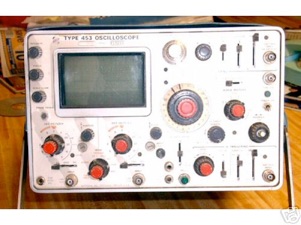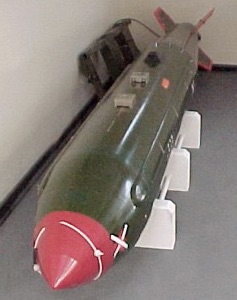Early Technology



Electronics in the 60's cont.
The Company must have been impressed because they transferred me to another Lab that was working on an L-Band Radar, and I joined in. I was 19 years old. As an engineer in training I wasn't allowed to design anything – this was a military project, and rules were strict. I was cleared for Top Secret, I suppose because my Dad was ex RAF and a Radar expert, itself top secret during the War. The OS act has expired by now, so I can probably talk about the work.
I began by assisting the engineers test a radar altimeter. It was very secret and the radar signal had to be kept secret from the Russians, so we tested it in very secure locations behind huge walls, sometime in medieval forts. We pointed the beam horizontally and reflected it with a tri-corner reflector, and I measure the time interval using an oscilloscope. We could only test it at short distances, but at least we knew it worked.
My Oscilloscope for testing

The real design work was in Kent, and I was transferred there to another very secret location within an existing factory that made innocuous things, a sort of cover operation, I suppose. We were called Fuze Division. Here in this lab were twelve engineers, and a few technicians like me. The radar system was to be the nose cone of an atomic bomb, and it would have to work as an altimeter from more than 10,000 feet high. I was sent to Farnborough and qualified as a civilian air observer with the RAF. They made me jump into a big pool of very cold winter water to right a liferaft together with three others, bail it out and turn on the ELT.
Then I was put into a high altitude chamber which took me to 20,000 feet on oxygen, which they removed until I almost blacked out, and then a man stuffed the mask back on me, and the whole world went red. I was to remember the feelings in my arms and fingers so that I would lnow when oxygen was needed. I had to learn how to put on a parachute and jump. And there were several days of ground school theory.
I then was qualified to test the radar in an aeroplane. A Vickers Varsity was always standing by in the field nearby, waiting for us to test anything. i became the official flight test 'engineer' and took the Radar up over various parts of England and Wales where we knew there would be no Russians listening in. We flew over the Bristol channel and over nudist camps where we were pretty sure there were no Russians.
To simulate a bomb drop the pilots took me up to 10,000 feet advised me to get set in front of my equipment because once they started to drop by slipping sideways, I would be pinned in place. And drop we did, just like a bomb. We pulled out just above the water, so close that the props made waves
Oh, the training I had in wFarnborough as not much use in this plane. There was no parachute, and the oxtgen system couldn't be connected to the mask. Not to worry, the pilot said, we never flew above 10,000 feet and oxygen wasn't needed. And it was too low to jump with a chute. To compensate for my disappointment they brought me a few beers.I don't suppose you have opened a beer at 10,000 feet—it exploded all over my equipment!
The radar is in the red nose cone on this WE177a weapon (this picture is non-classified, I suppose because it is now obsolete.) The great secret of the radar was that it could not be jammed by an incoming signal. Every rada pulse was made at a different randomized frequency, so any foreign incoming signal would not match. The frequencies that we used were classified, also the electronic mechanism we used to jitter the signal.












